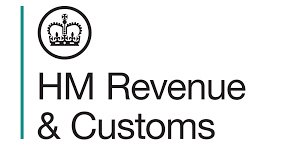HMRC SDLT: Lease for Indefinite Term: Tax Procedures and Notification Requirements Explained
Lease for Indefinite Term – Tax Procedures
This section explains the tax procedures for leases granted for an indefinite term under FA03/Sch17A/Para4. Initially taxed as a one-year lease, it requires further returns if continued beyond the first year. The process involves recalculating tax and notifying the Stamp Office. The content outlines steps for different scenarios, including when the lease becomes notifiable or continues beyond the notified term.
- Lease taxed as a one-year fixed term initially.
- Further returns required if lease continues beyond the first year.
- Recalculation of tax based on extended lease term.
- Returns made by letter to the Stamp Office.
- Include UTRN, new tax calculation, and self-assessment.
- Payment due within 30 days of end of notified term.
- Leases becoming notifiable must submit SDLT 1 within 14 days.
“`

Read the original guidance here:
HMRC SDLT: Lease for Indefinite Term: Tax Procedures and Notification Requirements Explained
SDLTM50550 – Procedure for Indefinite Term Leases
When a lease is granted for an indefinite term, this type of lease is treated as if it has a fixed term of one year for tax purposes. If the lease continues beyond that first year, it will then be reassessed as having a fixed term of two years, and so on. This process is important because the tax liability may change based on how long the lease actually lasts.
Scenarios for Tax Assessment
There are different situations that can arise based on whether the original transaction was reported, if tax was paid, or if the transaction was initially below the reporting threshold. Each scenario involves specific actions and documentation requirements.
1. Original Transaction Reported with No Tax Due
- If you initially informed HMRC of the lease through the SDLT1 form, and no tax was due at that time:
- When the lease continues after the first year, you will need to submit another return. This return will reflect the recalculated tax due based on the lease being treated as if it has a term of two years.
- This process happens every year the lease continues, adjusting the lease term accordingly.
- In your letter to the Stamp Office, you must include:
- Your Unique Taxpayer Reference Number (UTRN) from the original return.
- Details of the new tax calculation based on the extended lease term.
- A self-assessment of the tax that is now due.
- Payment for any tax owed within 30 days from the end of the term that you previously reported.
2. Original Transaction Reported and Tax Paid
- In this case, you have already made the original return and paid the tax:
- If the lease continues beyond the term you initially reported, you will need to submit a new return that recalculates the tax due based on the lease being a year longer than what was initially notified.
- Your letter to the Stamp Office should include:
- Your UTRN from the original return.
- Details of the updated tax calculation reflecting the new lease term.
- A self-assessment for any additional tax that is now due.
- Payment for the tax required within 30 days after the end of the previously notified term.
3. Original Transaction Not Reported
- If you did not report the original transaction because it was below the notification threshold:
- As the lease continues after the first year, it now becomes a reportable transaction.
- You will need to complete SDLT1, effective from the date of the original grant. Note that if you submit the return within 30 days of the lease continuation, you won’t face penalties for late notification.
- Your communication to the Stamp Office should include:
- Details of the new tax calculation for the now notifiable lease.
- A self-assessment of the tax that you now owe due to the lease becoming notifiable.
- Payment for any tax due within 30 days from the end of the term that was not reported earlier.
- From 1 March 2019 onwards, if a lease becomes notifiable for the first time because it has continued, the return and payment of tax have to be completed within 14 days from the end of the latest lease period.
Important Points to Remember
- The overall understanding is that indefinite leases are treated as fixed-term leases for taxation purposes.
- You must keep track of how long the lease continues and submit the necessary paperwork in a timely manner.
- Timeliness is crucial. Failing to inform HMRC about changes in your lease may result in penalties if you do not act within the stipulated timeframes.
Example Scenarios
To illustrate the processes outlined above, consider the following examples:
Example 1: Lease Initially Not Notifiable
Suppose you grant a lease that was below the notification threshold. After the first year, the tenant decides to stay. This means that the lease is now notifiable because it has continued. You must submit the SDLT1 form as soon as possible and include the new calculations and any tax now due.
Example 2: Lease Initially Reported Without Tax
If the initial lease was reported but no tax was due, you will need to recalculate the tax based on an extended lease term as it continues after the first year. The new return should be sent to the Stamp Office along with the required payment.
Example 3: Lease Reported and Paid
In cases where the original lease was reported and tax was paid, if it extends beyond the notified term, a further return will be necessary to cover the additional tax due for the new term. This must also be submitted in a timely manner, ensuring that all calculations are accurate and payments are made on time.
Understanding the procedures surrounding leases for an indefinite term can save you from unnecessary financial penalties and ensure compliance with HMRC regulations. Always stay informed about the Continuing taxation of leases and how the obligations change with the duration of the lease. Regular communication with HMRC and prompt filing of returns are essential parts of managing lease obligations effectively.







